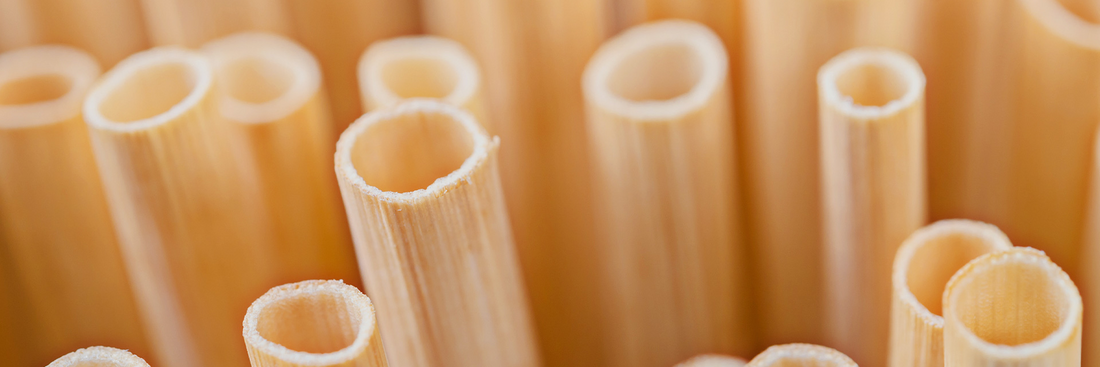As the demand for eco-friendly alternatives to plastic grows, wheat straw products have gained significant attention. But a key question remains: is wheat straw safe for your health and the environment?
In this article, we’ll dive deep into the safety of wheat straw, explore its advantages and disadvantages, compare it with plastic, and answer some of the most common consumer concerns including whether wheat straw is microwave-safe.
- Wheat Straws vs. Other Straws: Which One is Best for the Planet?
- What Are Common Types of Plant-Based Straws?
- Are Metal Straws Safe to Use?
What Is Wheat Straw?

Wheat straw is the leftover stalk after wheat grains are harvested. Traditionally discarded or burned, these stalks are now repurposed into biodegradable materials to make products such as:
- Drinking straws
- Plates and bowls
- Food containers
- Cutlery
These products are often marketed as sustainable and compostable but are they really safe to use, especially when in contact with food or heat?
Wheat Straw Products Safety

Modern wheat straw products are typically made by combining finely ground wheat straw fiber with natural or food-grade binders (and sometimes biodegradable plastics like PLA). The result is a lightweight, sturdy material that looks like plastic but behaves more sustainably.
When assessing wheat straw product safety, you should consider:
- Chemical composition: High-quality wheat straw items are BPA-free, phthalate-free, and do not release harmful substances under normal usage.
- Certifications: Reputable products meet safety standards from agencies like:
- FDA (U.S. Food and Drug Administration)
- LFGB (German Food Safety Standard)
- EN 13432 (EU Compostability Standard)
- ASTM D6400 (U.S. Compostability Standard)
Is Wheat Straw Microwave Safe?
One of the most frequently asked questions is: Is wheat straw microwave safe?
The short answer: Yes – but only under certain conditions.
Many wheat straw products are labeled as “microwave-safe,” but this depends on:
- The material blend: Some include PLA (polylactic acid), which can soften or degrade under high heat.
- Manufacturer instructions: Most safe microwave use is limited to low to medium power and short durations (e.g. under 2 minutes).
- Intended usage: Products like wheat straw plates or bowls may tolerate reheating food, but avoid using them for cooking or boiling liquids.
Is Wheat Straw Safer Than Plastic?
In most cases, yes. Compared to traditional plastic, wheat straw offers clear health and environmental advantages:
| Feature | Wheat Straw | Plastic (e.g. PP, PET) |
|---|---|---|
| BPA-free | Yes | Not always |
| Biodegradable | Yes | No |
| Releases toxins when heated | No (if certified) | Possible (esp. older plastics) |
| Sustainable sourcing | Agricultural waste | Fossil-fuel based |
By switching from plastic to wheat straw, consumers reduce plastic waste and avoid chemical exposure risks, especially when using products for food or drinks.
Pros and Cons of Wheat Straw Products

Wheat straw products are increasingly used in homes, restaurants, and schools thanks to their eco-conscious appeal. But like any material, they come with both benefits and limitations.
Pros
- Biodegradable & compostable: Decomposes in 3–6 months under industrial composting conditions.
- Non-toxic: Made without BPA or harmful dyes; safe for both children and adults.
- Microwave-safe (with limits): Suitable for reheating food; does not release harmful substances if used properly.
- Lightweight & durable: Doesn’t break easily, even with regular use.
- Pleasant texture: No soggy feel like some paper products; neutral smell and taste.
Cons
- Heat limitations: Can deform under extreme heat (>120°C); not ideal for deep frying or boiling.
- May scratch: Softer surface than ceramic or glassware.
- Plastic blends in low-quality versions: Not all products are 100% natural wheat straw check certifications carefully.
- Cost: Slightly more expensive than conventional plastic (though cheaper than bamboo or bioplastics in many cases).
Wheat Straw vs Plastic: Which One Is Better?
When comparing wheat straw vs plastic, it’s important to weigh not just cost or convenience but also health and environmental impact.
Health & Safety
- Wheat straw: Naturally BPA-free, safe in microwaves (short-term), and doesn’t leach harmful chemicals.
- Plastic: Often contains additives like BPA or phthalates; can leach toxins when exposed to heat or scratched.
Environmental Impact
- Wheat straw: Made from agricultural waste → fully biodegradable, renewable.
- Plastic: Derived from fossil fuels → non-biodegradable, pollutes land & ocean for hundreds of years.
Cost & Use
- Wheat straw: Slightly higher upfront cost, but more sustainable.
- Plastic: Cheaper short-term, but increasingly restricted due to bans and eco regulations.
Tips for Choosing and Using Wheat Straw Products

- Look for labels: Microwave-safe, BPA-free, compostable certifications.
- Read product instructions: Especially for heat usage and dishwasher compatibility.
- Avoid fakes: Choose trusted brands or certified suppliers (like [Your Brand Name Here]).
- Proper disposal: Compost if possible; if not, dispose with organic waste (if allowed in your region).
Frequently Asked Questions (FAQs)
Can wheat straw plates go in the microwave?
Yes, most are safe for reheating food for 1–2 minutes at medium power. Always check manufacturer labels.
Does wheat straw contain gluten or cause allergies?
No, wheat straw is made from the stalk, not the grain. It's gluten-free and generally allergen-free.
How long does it take for wheat straw to decompose?
In commercial composting conditions, within 3–6 months. Home composting may take slightly longer.
Is wheat straw suitable for hot drinks or soup?
Yes, but avoid prolonged exposure to boiling liquids. Best used for warm beverages or reheated meals.
Conclusion
When sourced and used correctly, wheat straw is a safe, eco-friendly alternative to plastic. It’s non-toxic, compostable, microwave-safe (under limits), and ideal for individuals and businesses embracing sustainable living.
Whether you’re a parent seeking safer dinnerware or an F&B brand wanting to reduce plastic waste, wheat straw products are a responsible and reliable choice.
👉 Want to try better alternatives?
Check out our sugarcane straws and paper straws 100% biodegradable, food-safe, and tested for quality.




